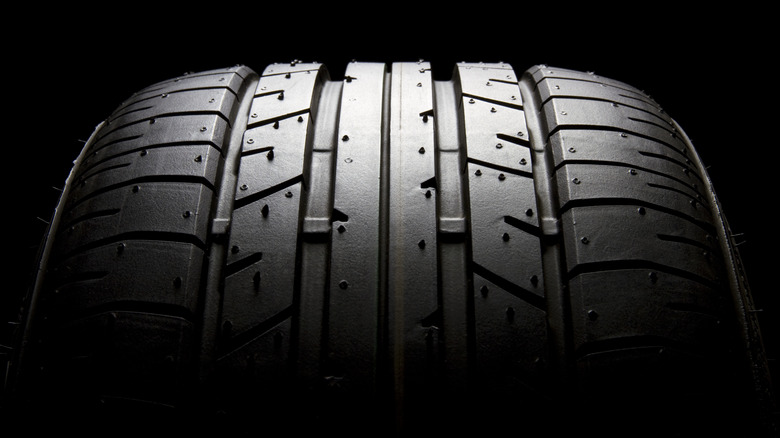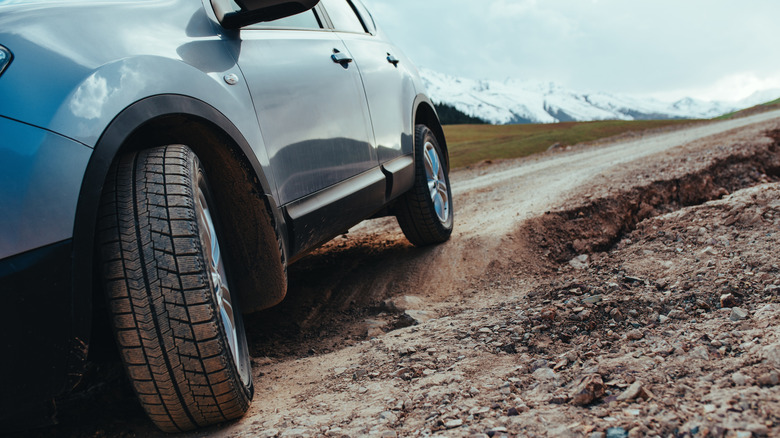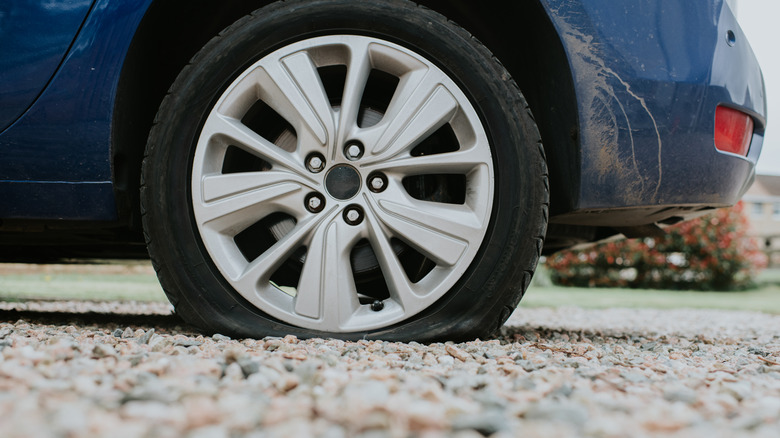5 Benefits Of Switching To Wider Tires On Your Daily Driver
The debate over whether you should go for wider or narrower tires for your vehicle — be it a four-wheeler or a two-wheeler — has been ongoing for a long time. There is no ultimate right or wrong in this, but it all depends on how you want to use the vehicle. However, we can make the decision between wide and narrow tires easier for you by familiarizing you with the five benefits of switching to wider tires on your daily driver. From better grip and stability to reducing the headache of dealing with random punctures every now and then, there is more to wider tires than you may think.
Tires are essential, and you shouldn't choose them blindly. Checking ratings, dimensions, and maintenance regimes when shopping is critical. You also have to be careful that you fit the same-sized tires instead of a mix and match of differently sized tires. Before proceeding, there is an important con to consider when going with wider tires: they have a higher rolling resistance, which may increase the overall fuel consumption of the vehicle compared to narrower counterparts.
Better handling and stability
Wider tires expand the space of contact between the vehicle and the ground, therefore providing more support to the car's body. Moreover, with narrower tires, there is also a chance of rolling over and falling down, especially when it comes to bikes and motorcycles. Wider ones reduce this risk by offering greater stability for the driver so they can get a better hold on these one-seater rides. Although the vehicle's stability also depends on whether all the tires are rightly aligned and balanced in their designated spot. The same factor simultaneously plays a crucial role in making your tires last longer.
Other than this, when the tires are in contact with the road, you will be able to maneuver the vehicle better and steer it away from sharp and uneven terrains with effortless turns of the steering wheel. In a YouTube experiment by Tyre Reviews, we saw that the wider tires were quicker in dry handling conditions, and the narrower tires performed slightly quicker in the wet handling trial.
Enhanced breaking performance
With wider tires comes better braking performance. How exactly? A larger contact area between the two surfaces means greater friction will be produced when brakes are applied, spreading evenly across the tires. When there's greater resistance on the surface, the vehicle will slow down quicker, and the overall braking distance will be reduced.
This is especially great for driving on highways and roads where you have to maintain a certain speed limit. So, even if something comes in front of the car out of nowhere, you can apply the brakes and expect the tires to aid with the abrupt stops. Global Cycling Network on YouTube actually performed a little experiment to test the hypothesis that wider tires improve braking performance. Riding a bicycle with three different tire widths — 25, 28, and 32 millimeters — it was seen that the 32-millimeter tires had the shortest braking distance, and the bicycle came to a quicker halt than the other two.
Enable an epic off-roading experience
It goes without saying that if you are seeking a thrilling off-road adventure, then wider tires should be the pick for your vehicle. These tires will perform well on rugged and sharp terrains, with greater contact between the tires and the surface, hence more stability. In addition, because there is a greater area in contact with the surface, there's more traction, and the drivers will have a better handle over the vehicle on bumpy patches.
The wider tires will allow for an even and more stable weight distribution of the vehicle's body, preventing it from leaning on one side or the other during sharp turns around mountains and hills. An even weight distribution also allows the vehicle to climb hills and surfaces that are not exactly flat while also aiding your drive on soft lands, like sand and mud, reducing the chances of sinking. Wider tires experience lower deformation when moving over a rock or another obstacle on the road, ensuring the tire's quality and longevity stay intact.
Smarter pick for heavy vehicles and loads
For carrying a greater load on vehicles, it is necessary that you integrate it with tires that offer a higher load index. Wider tires generally have a higher load index — the amount of load a single tire can tolerate without the risk of deflation or bursts. These tires provide a wider point of contact between them and the road, thus the weight is evenly distributed across all, putting less pressure on any one tire.
What's more, with wider tires, the risk of the vehicle leaning on one side or the other due to the weight of the load is minimized, so it's a safer ride if you use your car to transport materials daily. These tires are the right pick if you drive heavier vehicles, like SUVs or jeeps. Regarding bicycles, wider tires help distribute the rider's weight more evenly, especially for heavier riders.
Lowers the risk of punctures
Another benefit of going with wider tires is that there will be fewer instances of tire punctures in the middle of the road. The lower pressure in tires allows for less deformation when struck with smaller obstacles in the way; therefore, point punctures can be avoided. However, this isn't always the case because the quality and material of the tire and road conditions also increase and determine how prone it is to punctures.
Imagine driving on a long, empty road like a highway with no place to fix this annoying situation, and the only option is to drive on a flat tire, which is a terrible habit that will greatly slash the life of your tire. In such cases, wider tires will offer you more protection against nasty punctures, so you can ride without a worry.





